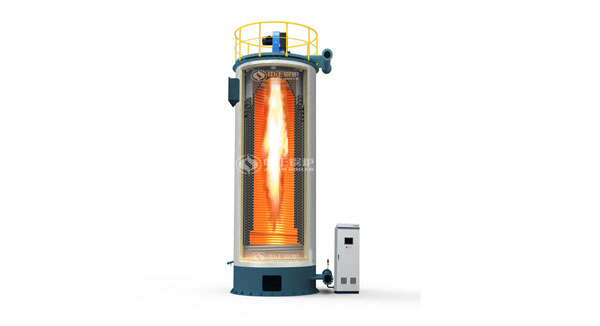
Product thermal capacity: 1200-35000 KW
Working pressure: 0.8-1.6 MPA
Outlet temperature:: 450°C

Applicable fuels:Bituminous coal, heavy oil, light oil, diesel, natural gas, liquefied gas, city gas
Applications:Chemical, fertilizer, melamine, alumina and other high temperature heating technology
Send E-mail:zhulin@zozen.com
The molten salt heater is a vertical cylinder coil structure. Its heating surface is composed of two layers of inner and outer layers arranged tightly in spiral coil. The burner is placed in the center of the furnace top, and the flame of the combustion chamber is radiated and heated from top to bottom with the inner surface of the inner coil. The high-temperature flue gas generated by combustion enters the first convective heat transfer zone between the inner and outer coils from the bottom of the inner coil. After convective heat transfer, it enters the second convective heat transfer zone between the outer coil and the shell from the upper part of the outer coil. After convective heat transfer from the upper to the lower part of the shell, it is discharged from the exhaust nozzle at the lower part of the shell. The molten salt heat carrier is divided into 8 channels from the lower header and enters into the heater (including 5 channels of inner coil and 3 channels of outer coil). After absorbing heat in the furnace, it is collected into the upper header and discharged from the upper header. The outer coil is supported on the bottom bracket, and the inner coil is hung on the shell by the hanging device. The molten salt heater body is manufactured in a complete form after the manufacturing plant is completed.
In the temperature range of 350~600 C, molten salt is usually used as heat carrier.
At present, the commonly used molten salt is a ternary inorganic salt: the melt mixture formed by melting belongs to dangerous goods. Compared with thermal oil boiler, molten salt can obtain higher service temperature and better thermal stability at the same pressure. Its main physical properties are as follows: melting point is 142. When the density is 150 degrees, the temperature decreases linearly in this temperature range. The kinematic viscosity decreases exponentially with the increase of temperature, reaching a stable value at 400~550 C. Thermal conductivity of specific heat capacity (500 C). Coefficient of expansion of molten salt in solid state.
1. Do not decompose below 455 degrees.
2. NANO2 slowly decomposes at 455~540°C;
3. If it is in contact with air, oxidation reaction will occur in NANO2
4. At 820 ° C or above, the decomposition of NANO2 is very strong, and the generated nitrogen will cause the molten salt to boil, and the composition change due to thermal decomposition will increase its melting point;
5. The bulk steel molten salt furnace should adopt the vertical cylindrical coil type for two reasons: one is the vertical fullness of the flame in the combustion chamber of the vertical cylindrical coil structure; the other is the vertical cylindrical coil type knot. Conducive to the discharge of medium (molten salt or water).
| Model | RYQ-350 | RYQ-600 | RYQ-850 | RYQ-1200 | RYQ-1400 | RYQ-2400 | RYQ-3500 | RYQ-4600 |
| Rated thermal power (kW) | 350 | 600 | 850 | 1200 | 1400 | 2400 | 3500 | 4600 |
| thermal efficiency (%) | 70 | 70 | 70 | 70 | 70 | 70 | 75 | 75 |
| Design pressure (MPa) | 1 | 1 | 1 | 1.1 | 1.1 | 1.1 | 1.3 | 1.3 |
| Maximum medium temperature (℃) | 450 | 450 | 450 | 450 | 450 | 450 | 450 | 450 |
Name: Industrial Boiler Equipment
For: product information and pricing, chat with sales agent:
Service Online